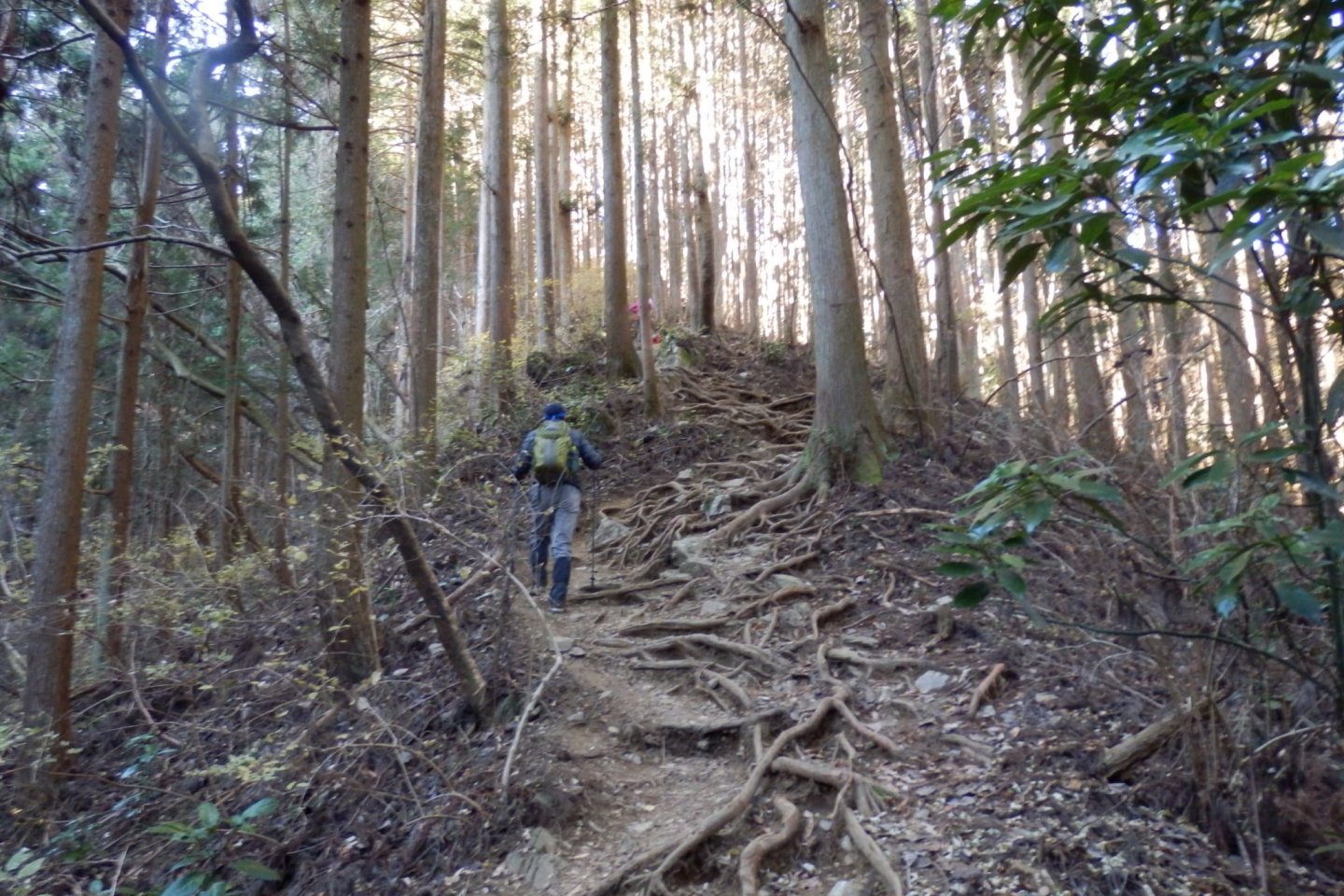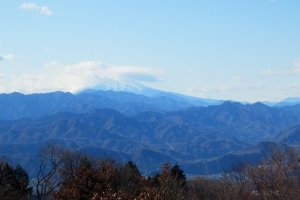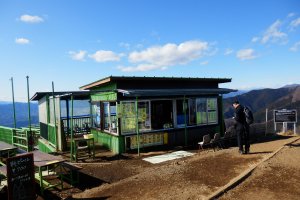Mount Jinba (857 meters) is located right on the prefectural border separating Tokyo from Kanagawa Prefecture. The mountain is within easy reach from both central Tokyo as well as from Yokohama, making it a popular destination for day trips.
The mountain’s claim to fame is the grand view of Mount Fuji which can be seen on clear days. In addition to this, there are three tea houses on top of the mountain offering great soba and udon noodles along with coffee, beer and sake.
Getting to the foot of the mountain
On my trip, I set out from the Tokyo side, taking the JR Chuo Line to Takao Station. From there, I went by bus to Jinba Kogen Shita, the final stop.
The bus ride took a little more than half an hour and placed me in a tiny settlement already deep in the mountains. A few houses in a forested valley, a soba noodle restaurant open since 7:30am awaiting hikers who needed a hearty hot soup for breakfast before starting their climb.
From the settlement, I set out ascending the winding road towards Wada Pass. After about one kilometer, I arrived at an English-language sign pointing towards the “Top of Mount Jinba.” In Japanese, it said, “Entrance to the New Mount Jinba Hiking Course.”
The hiking trail
Following the signs, I turned into the woods with the trail soon becoming rather steep. Tree roots sticking out of the ground supported my feet, serving as a sort of staircase created by nature.

It took me about an hour of steep hiking until the trail converged with a much wider and more popular path. Soon after, I spotted the landmark horse statue on the peak of the mountain.

The peak
Mount Jinba translates roughly as "Mount Horse Camp." Nobody knows exactly where the name comes from. Theories have been proferred that some ancient warlord had hidden his horses there before attacking the castle of another warlord or that a local ruler had simply used the mountain top as a horse pasture.
In any case, the top of Mount Jinba is a large, hilly plateau covered by grass, ideal as a pasture for horses to be kept out of the eye.
The current horse monument has very little to do with any of that past. It was erected by a railway company in the 1960s to promote tourism to the mountain.
Views from the mountain top
The Mount Fuji views depend not only on the season and the weather but also on the cloud conditions around the mountain. I went on a clear winter's day, usually the best season for Mount Fuji spotting. Still, only on brief occasions, Mount Fuji partly lifted its cloudy veil.

In the opposite direction, the skyscrapers of Tokyo were clearly visible under a brownish layer of smog. Tokyo Sky Tree stood out in the distance and I wondered what that view might be like on a clear winter's night. It must be an endless sea of lights with the various landmarks clearly sticking out.

Jinba soba
I went into one of the tea houses and ordered a large bowl of Jinba Soba which consists of a hot noodle soup with plenty of locally grown shiitake mushrooms, spiced up with yuzu. Delicious.


On my way down, I took the Traverse Route towards Wada Pass, a very easy trail to walk.



































